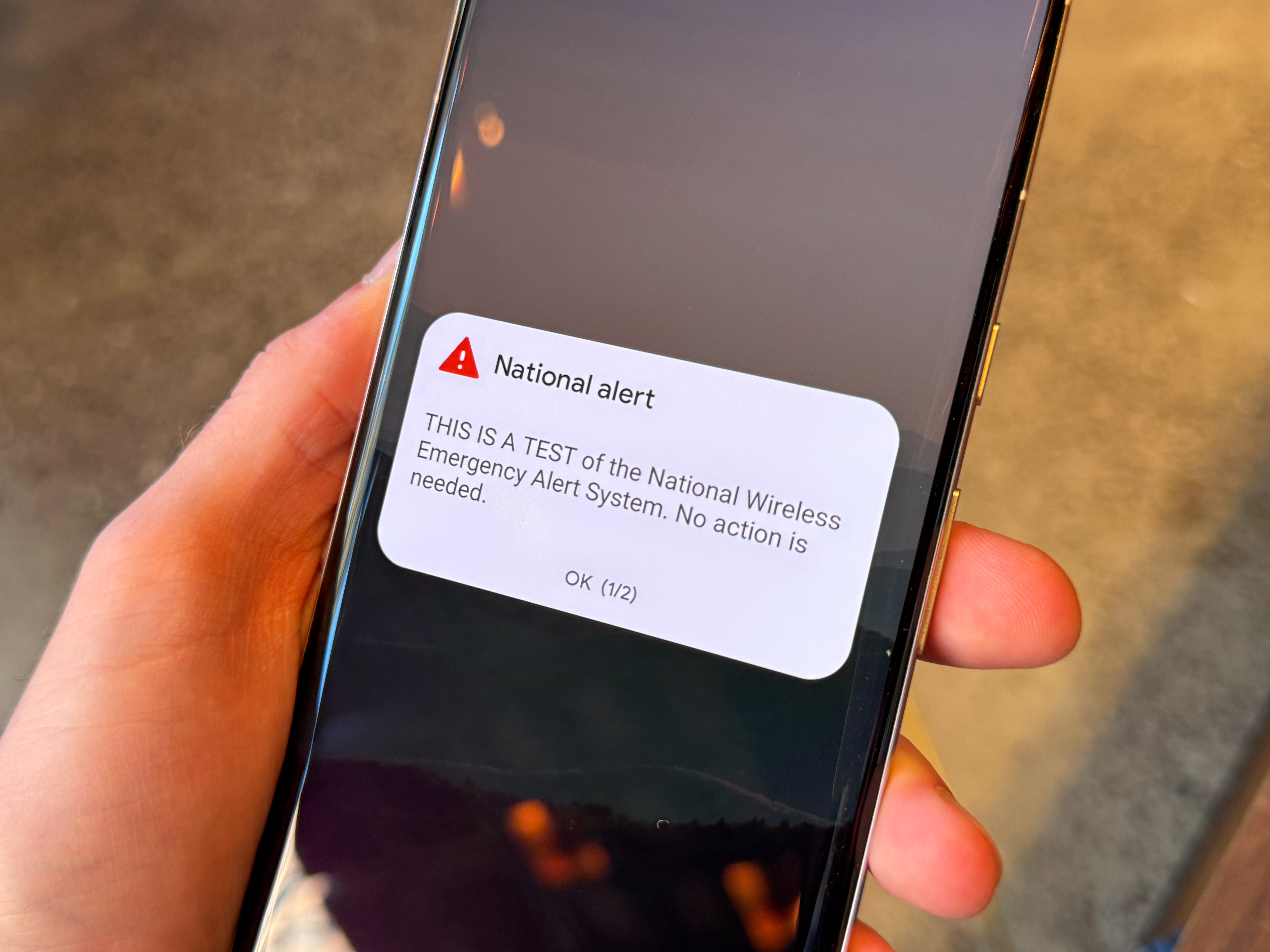
The Federal Emergency Management Agency (FEMA) and the Federal Communications Commission (FCC) conducted a nationwide emergency alert test today, Wednesday, October 4. The test included two types of alerts: Wireless Emergency Alert (WEA) on your phone, and Emergency Alert System (EAS) on TV.
According to a government release, the alert was scheduled to be sent at 2:20 p.m. ET — although it appeared the alerts were issued a few minutes apart, slightly earlier than initially planned.
The WEA portion of the test included all consumer cell phones in the US, including the brand new Apple iPhone 15 series, the Samsung Galaxy Z Flip 5, and basically any phone made in the last decade. At the specified time, the phone received an alert message in English or Spanish, depending on the language settings on the phone. This is the third WEA test to be conducted in the US, and is intended to evaluate the system’s effectiveness in delivering critical messages to the public during an emergency.
The EAS test involves sending voice messages over radio and television and is the seventh national test overall. The test sought to evaluate the reliability and effectiveness of the system in disseminating immediate alerts to the public through various media.
FEMA and FCC are working closely with EAS participants, emergency managers, and other groups to ensure that these tests run smoothly. The goal is to improve emergency response and preparedness capabilities so that people can receive accurate and timely information during crises.
Why did my phone get an emergency alert?
Officials are conducting tests to ensure that both emergency alert systems work seamlessly nationally during emergencies. The tests were conducted using FEMA’s Integrated Public Alert and Warning System (IPAWS), an Internet-based system that allows officials to send authenticated emergency messages to the public through a variety of means, including cell phones.
During testing, the WEA system sent a message to the cell phone. In contrast, EAS sent a verbal message to supported devices through the IPAWS-OPEN platform.
The WEA test was scheduled to last approximately 30 minutes and send a message to anyone with a WEA-compatible phone. To receive messages, your phone must be turned on and within range of an active cell tower.
Consumers will receive this message: “This is a test of the National Wireless Emergency Alert System. no action required, Spanish phone users will see this message: “This is a test of the National Emergency Alert System. no action required,
The EAS test is scheduled to last approximately 60 seconds. During this time, supported devices will broadcast a voice message: “This is a nationwide test of the emergency alert system issued by the Federal Emergency Management Agency, covering the United States from 14:20 to 14:50 pm ET. This is only a test. No action is required from the public.”
Your phone lets you disable emergency alerts and Amber alerts if you want, but some types of alerts can’t be turned off by law.


